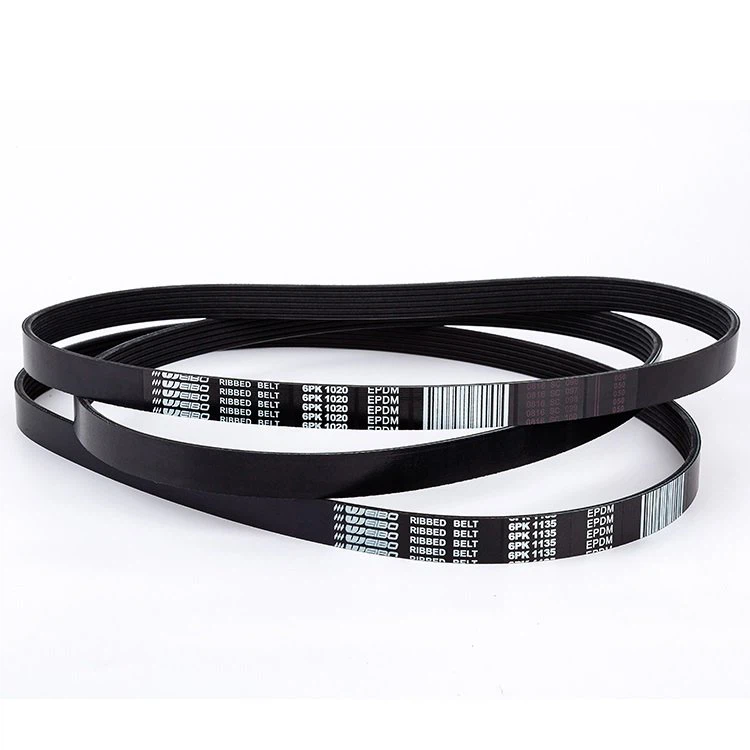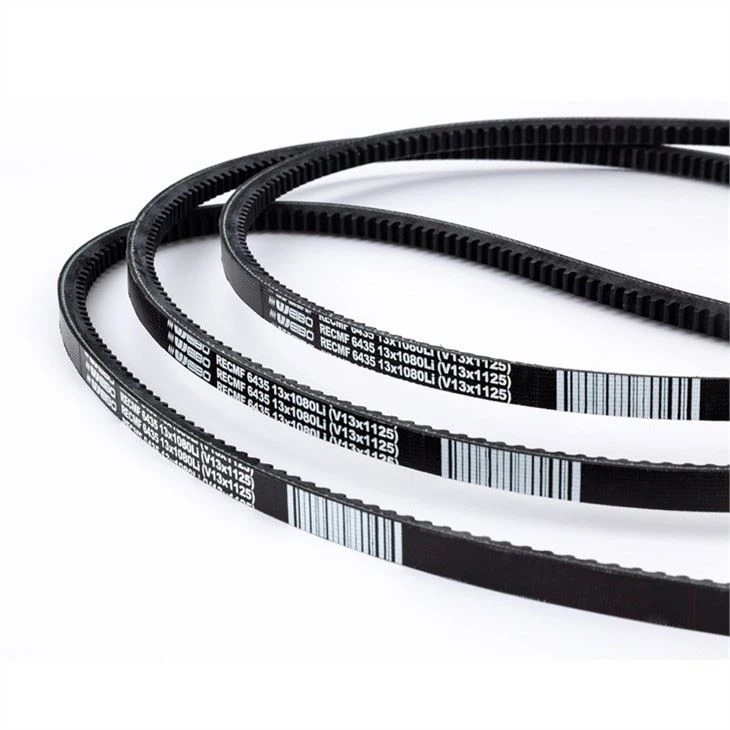Features
● EPDM as main rubber material, Aramid fiber as reinforcement material, quality reach to 150,000KM
● More flexible and oil resistance, leading to longer service life.
Specification
PK BELT | |||||
Section | Width (mm) | Rib Pitch (mm) | Degree | Manufacturing Range | |
Min. (mm) | Max. (mm) | ||||
PK | 4.5 | 3.56 | 40° | 300 | 5000 |
COGGED V BELT | |||||
Section | Top Width (mm) | Height (mm) | Degree | Min. (mm) | Max. (mm) |
9.5 | 10 | 8 | 38° | 550 | 3000 |
10AVX | 10 | 8 | 38° | 550 | 3000 |
13AVX | 13 | 9 | 38° | 550 | 3000 |
17AVX | 17 | 11 | 38° | 550 | 3000 |
22AVX | 22 | 13 | 38° | 550 | 3000 |
Tips
① The fan belt should be neither loose nor tight, because too tight will make the bearing over load, thus aggravating wear, power consumption increase, but also will make the pump shaft bending, transmission belt stretched deformation, shorten the service life.
② According to the general standard of car maintenance, the fan belt should be replaced at about 60,000 to 80,000KM, but Pioneer fan belt are designed to perform well up to 100,000km. Depending on the weather conditions you live in, some Pioneer fan belts may even last to 150,000KM. If you drive your car in a dry and hot climate, remember to park your car in a shaded area. Keep your vehicle away from direct sunlight and park it in a garage or under a tree. Whenever you're conducting maintenance procedures, make sure that you avoid spilling any coolant or oil on the belts to avoid damage and slipping.
③ Fan belt also advisable to avoid overheating your engine to keep your belts in good shape. Your best bet is to inspect your belts at least once a month and watch out for signs that indicate wearing or damages. Keep in mind that the belts are essential in keeping your engine running.








